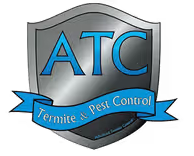Termite Control Done Right For Baltimore Properties
If you have had the experience of misplacing your keys, you know how frustrating it can be, especially if you need to get somewhere fast. You frantically search through the house, looking in the usual locations. When you still can’t find your keyring, you shift to odd areas like bathroom drawers and kitchen cabinets. Why do we become frantic when we cannot locate our keys? Because without them, we can’t open the house, start the car, or get into the office. Keys are a necessary part of life because they unlock doors.
Since keys unlock doors, we use the term “key” to also refer to opening up mysteries, and one puzzle many Baltimore homeowners face is how to stop termites from slowly harming their houses. Fortunately, a Baltimore pest control company has solved the termite mystery, ATC Pest Control. For over 15 years, our family-owned and operated local company has provided high-quality service with the best guarantees to our community. We have served over 90,000 customers because people know that when quality counts, they can count on us.
We don’t want homeowners to feel locked out from learning how to stop termites in their homes. Therefore, in this brief article, we give you some keys that will help you unlock the termite mystery.
Termite Activity Can Be Hard To Identify
The termites that infest our area are eastern subterranean termites. Judging by the name, you can see that this termite species lives underneath the dirt. These termites live in the yard under rotting landscaping timbers, half-buried wood scraps, next to water-logged fence posts, and inside decaying tree stumps. Underneath the damp wood, subterranean termites create a network of tunnels in the soil as deep as 18 to 20 feet. Sometimes these tunnels connect to multiple decaying wood structures in the yard. Inside the buried grid in the yard are chambers where the queen stores eggs and where nymphs grow protected by soldier termites.
Poor drainage and restricted airflow from dense vegetation create moist soil that provides subterranean termites with water and protection against the sun and heat but does not provide nutrition. Termites get their nutritional needs from nearby rotting wood, but only one group in the termite caste system eats wood.

A termite colony has three groups; workers, soldiers, and reproductives. If you see a termite, it is likely a worker because they are the ones who leave the nest to forage for food. Subterranean worker termites are sterile, blind, and wingless; they have a creamy-white 1/8-inch long body with two straight antennae and six legs. Worker termites have razor-sharp teeth that they use to shave off small wood chunks. They consume the wood and then return to the colony to regurgitate it to feed the growing nymphs and other group members. Because subterranean termites require moisture and since heat and sunlight quickly dehydrate them, the workers construct mud tubes as conduits between the soil and the wood source.
Soldier termites remain in the colony guarding entryways against ants and other predators. Although soldier termites also have creamy-white bodies, their heads are rectangular, elongated, and brownish. They have a large set of jaws capable of killing predators that attack the nest. You will not see these termites because they remain hidden underneath the earth.
However, during the spring and fall, you may see flying reproductive termites swarming around outdoor lights or a window at dusk or dawn. Known also as swarmers or alates, the king and queen produce these termites only after the nest has matured, which usually takes a few years. The role of reproductive termites is to find locations for nearby satellite nests.
Because subterranean termites live in the soil and work inside damp wood, how can you know they are on your Baltimore property? The following are a few keys to determining the presence of termites:
- Mud tubes on the foundation
- Swarmers around outdoor lights and windows in the fall and spring
- Discarded wings on window sills
- Sawdust-like piles near pinholes in wood
If you see these signs of termites, contact ATC Pest Control immediately. Our highly-trained technicians know where to investigate and the indications of a termite problem on your property.
A Termite Infestation Can Cause Extensive Property Damage
When a pair of reproductive termites fly from the nest, they search for a location to begin a new colony. The odor from fungus-infested wood attracts swarming reproductive termites. The swarming termites will land and start a new nest in the moist soil near the timber. If this potential food source is in the crawl space, basement, porch, or wood deck, the termites will squeeze through openings as small as 1/16th of an inch.
When they survive the elements and predators and find a spot, they land, discard their wings, burrow into the soil, and seal the entrance. Inside their new home, the female (queen) produces a small batch of eggs. The king and queen nourish the eggs and emerging nymphs that soon develop into workers. This process repeats with the now-matured workers taking responsibility for attending to the eggs and offspring and providing food. Soon soldiers are born, and after a few years, reproductive termites. It takes a few years for a new nest to grow to a significant size to cause damage to a house.
Subterranean termites build huge nests compared to other termite species. For example, a mature drywood termite nest has about 2,500 members, but a small subterranean termite colony has 60,000 termites, and a large one will boast over 2 million. Although workers, soldiers, and reproductives are in a mature nest, most are worker termites constantly chewing on nearby wood to provide food for the nest. With tens of thousands of worker termites eating wood daily, a small colony of 60,000 consumes five grams daily or about 2.3 feet of a 2×4 wood board annually. Imagine how much damage a nest with millions will cause!
The insurance industry estimates that termites cause $5 billion dollars in damages annually in the United States. Unfortunately, most homeowner policies do not cover termite damage. When a homeowner notices signs of termite damage, like sagging floors, collapsing structures, swollen ceilings and floors, and blistering wallpaper or drywall, the costs are usually thousands of dollars.
To protect your home against costly termite damage, you need the best termite control company for your Baltimore home from ATC Pest Control. ATC stands for Advanced Termite Control; our numerous awards prove that we deliver superior termite protection in Maryland.
Once ATC Pest Control resolves your termite problem, you can help make sure they never return by implementing these termite prevention tips:
- Provide proper drainage in the yard
- Replace rotting fence posts and landscape timbers
- Eliminate wood scraps from the lawn
- Elevate firewood and relocate 20 feet from the house
- Grind down dead tree stumps
- Create an 18-inch barrier between any lumber and the soil
- Seal cracks in the foundation
- Cover the crawl space vents with screens
- Repair leaking pipes, faucets, and drains
- Ensure that the crawl space and basement are dry and ventilated
When an ATC Pest Control technician inspects your house for termite removal, we can provide additional recommendations for your situation.
The Pros To Know For Total Termite Control In Baltimore
ATC Pest Control provides termite treatment near you. We will listen to your concerns and dispatch a highly-trained technician to inspect your Baltimore home. Using the latest technology, like a thermal imager, we can see inside walls as we look for entry points, attractants, and termite hotspots. We encourage homeowners to accompany us as we methodically investigate the house from the crawl space or basement to the attic so they can see if any termite damage exists.
If we determine you have active termites, we will develop a treatment plan using Integrated Pest Management (IPM) solutions. This method addresses the cause, elimination, and prevention of termites based on the latest practices that match the termite species infesting your house. Since eastern subterranean termites live in the soil, part of our treatment involves trenching around the perimeter and injecting Altriset®. This product is an EPA-registered, reduced-risk, non-repellant termiticide that effectively stops termite destruction by paralyzing worker termite mouthparts, causing them to die from starvation.
Since subterranean termites live in underground webs of tunnels and chambers, we also inject Termidor® into the soil in the 6×6-inch trench. This product attaches to worker termites, and they unknowingly carry it back to the nest, where they spread it to other members. Termidor® prevents growing termites from molting resulting in suffocation and death. This product eliminates the nest beginning with the youngest to the oldest.
To protect your family and pets, we cover the trenches with dirt. In areas where we need to drill into the concrete next to the home, we inject them with the products and then fill them with hydraulic cement. In the crawl space, we treat exposed wood with an all-natural odorless mineral product that converts the sugary cellulose, which termites eat, into salt, which they will not eat. Contact us today to learn more about the termite service near your home from ATC Pest Control.
Winged Ant or Winged Termite? Know the Difference.
It’s Spring, a wonderful time of year. The flowers are beginning to bloom and the bugs are coming out of hibernation. It’s Termite time, how can you prepare your house to resist these little pests? Do not ignore any signs of a termite swarm. A termite swarm can happen in any area, even if you…



